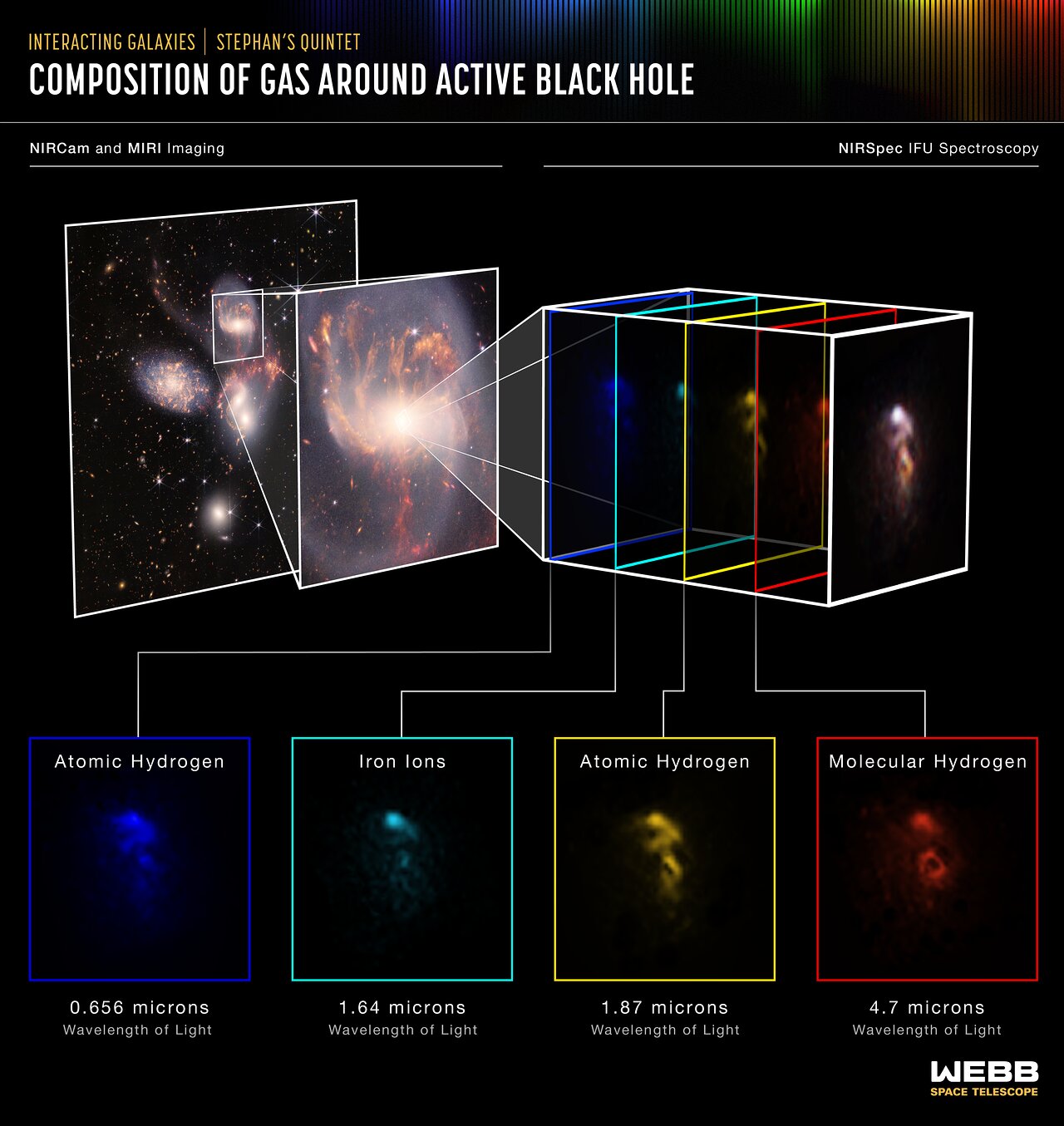Composition of Gas Around Active Black Hole (NIRSpec IFU)
Stephan’s Quintet is a visual grouping of five galaxies located in the constellation Pegasus. Together, they are also known as the Hickson Compact Group 92 (HCG 92). Although called a “quintet,” only four of the galaxies are truly close together and caught up in a cosmic dance. The fifth and leftmost galaxy, called NGC 7320, is well in the foreground compared with the other four.
Tight groups like this may have been more common in the early universe when their superheated, infalling material may have fueled very energetic black holes called quasars. Even today, the topmost galaxy in the group – NGC 7319 – harbours an active galactic nucleus, a supermassive black hole 24 million times the mass of the Sun. It is actively pulling in material and puts out light energy equivalent to 40 billion Suns.
The NASA/ESA/CSA James Webb Space Telescope studied the active galactic nucleus in great detail with the Near-Infrared Spectrograph (NIRSpec). The instrument’s integral field units (IFUs) – a combination of a camera and spectrograph – provided the Webb team with a “data cube,” or collection of images of the galactic core’s spectral features. Using IFUs, scientists can measure spatial structures, determine the velocity of those structures, and get a full range of spectral data. Much like medical magnetic resonance imaging (MRI), the IFUs allow scientists to “slice and dice” the information into many images for detailed study.
NIRSpec’s IFUs pierced through the shroud of dust to measure the bright emission from outflows of hot gas near the active black hole. The instrument saw the gas near the supermassive black hole in wavelengths never detected before, and it was able to determine its composition.
Some of the key emission lines seen by NIRSpec are shown in this image and represent different phases of gas. Atomic hydrogen, in blue and yellow, allows scientists to discover the structure of the outflow. Iron ions, in teal, trace the places where the hot gas is located. Molecular hydrogen, in red, is very cold and dense, and traces both outflowing gas and the reservoir of fuel for the black hole. The bright, active nucleus itself has been removed from these images to better show the structure of the surrounding gas.
By using NIRSpec, scientists have gained unprecedented information about the black hole and its outflow. Studying these relatively nearby galaxies helps scientists better understand galaxy evolution in the much more distant universe.
NIRSpec was built for the European Space Agency (ESA) by a consortium of European companies led by Airbus Defence and Space (ADS) with NASA’s Goddard Space Flight Center providing its detector and micro-shutter subsystems.
For a full array of Webb’s first images and spectra, including downloadable files, please visit: https://esawebb.org/initiatives/webbs-first-images/
Credit:NASA, ESA, CSA, and STScI
About the Image
| Id: | weic2208d | |
|---|---|---|
| Release date: | 12 July 2022, 17:09 | |
| Related releases: | weic2208 | |
| Size: | 3754 x 3973 px | |


